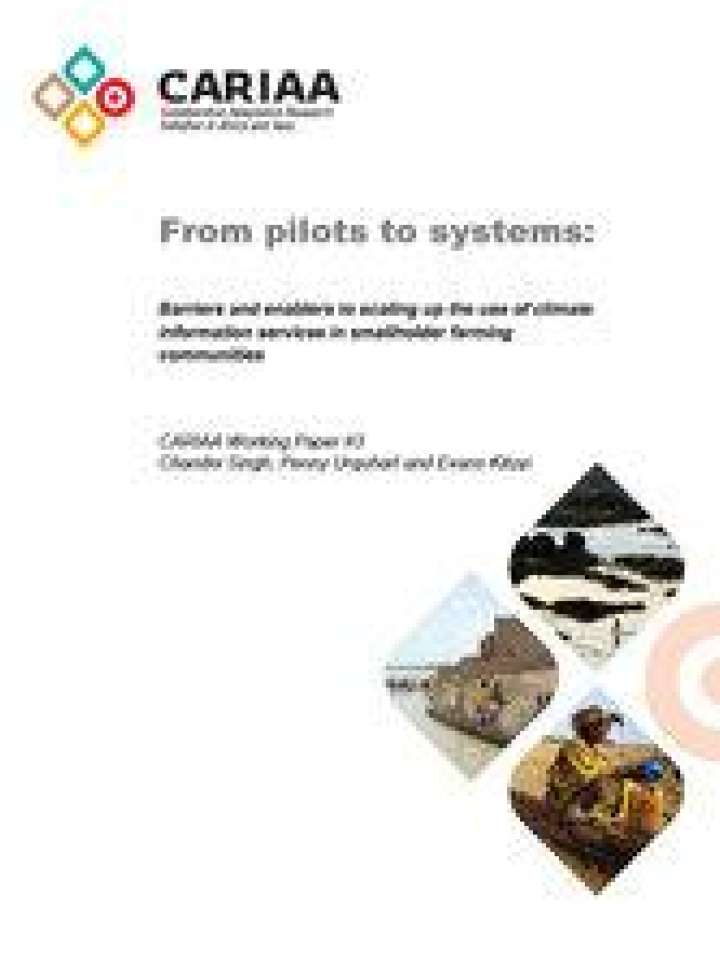From pilots to systems: Barriers and enablers to scaling up the use of climate information services in smallholder farming communities
This paper explores the main barriers and enablers to scaling up climate information services (CIS) by drawing on case studies from research, policy and practice in Africa and South Asia. Climate information services have in fact emerged as a key input for adaptation decision making, aiming to strengthen agricultural livelihoods by managing climate risks.
The key messages provided in this publication are the following (p. 30-33):
- An exit strategy that includes how to implement a phased handover process for a successful pilot should be incorporated into the design stage of the pilot to enable scaling up.
- While pilot champions and intermediaries play a crucial role in scaling up CIS, they may be constrained by issues such as lack of continuity due to short project and funding cycles, multiple roles for intermediaries, and low levels of trust that affect acceptance and uptake of climate information (CI).
- Capacity building programs that are tailored to specific contexts and use participatory, formal and informal processes to facilitate dialogues are likely to be more successful than top-down “directives” in enabling scaling up of CIS.
- For ICTs (information communication technologies) to fulfill their potential as important tools for climate information provision, they must be locally relevant, supported by trained staff, and convey accurate and timely information.
- Sustaining effective partnerships to scale up CIS requires ownership on the part of multiple actors, a collaborative approach that enables knowledge coproduction, and a supportive institutional framework.
- While financing the transition from innovative CIS pilots to large-scale initiatives remains challenging, potential ways forward include creating linkages for mainstreaming CIS into government budgets, enhancing demand for CIS along the value chain, and engagement of the private sector.
CARIAA Working Paper #3. This document is published under a Creative Commons Attribution-NonCommercial-ShareAlike 4.0 International licence.
Explore further
